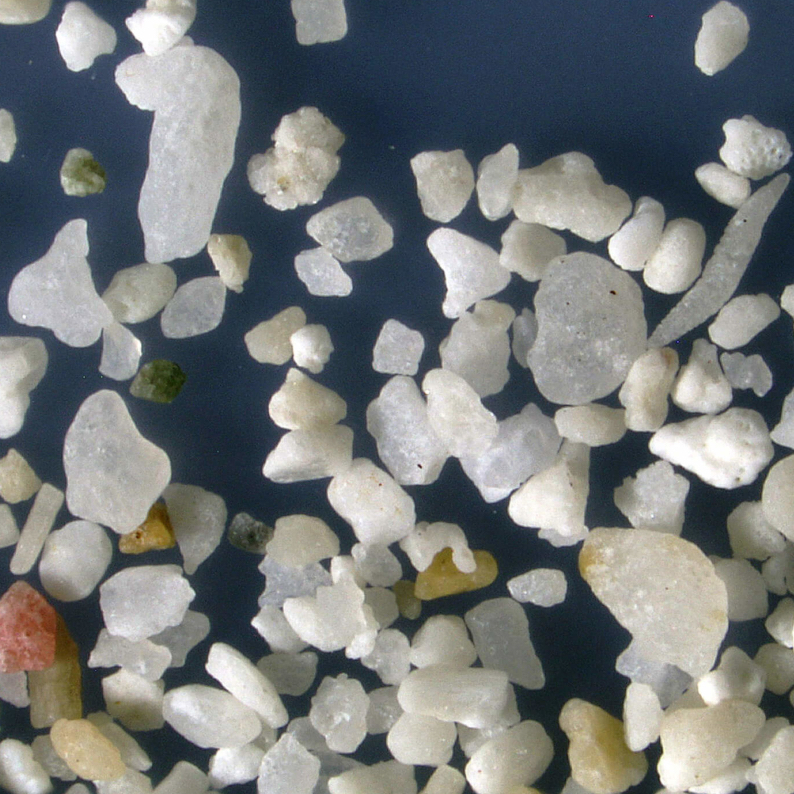
Although St. John is a volcanic island and part of a submarine mountain range extending from Cuba to Trinidad, sand on recreational beaches is primarily biogenic. A variety of both larger and smaller gray and tan sand grains with a few white and black grains are features of this sample. Except for some of the black sand grains that are probably of volcanic origin, the majority of this sand is biogenic.

This large mixture of sand grains is essentially of biogenic origin representing bleached coralline algae and fragments of coral with the exception of a larger dark grain of volcanic origin that is at the top right center (volcanic sand grain) and is above a tan conical snail shell, an octocoral sclerite and a tan and brown micromollusk chard. A red foram most likely a fragment of a benthic Homotrema is present at 11 o’clock and two white forams are present (one at the center and one at the bottom edge of the image). A tan foram is present at the lower right near the 1 mm mark.
Geographic Overview
Only 9 miles long and 2 miles wide, St. John boasts of lush emerald mountains, hills and valleys without many flat areas, and soft white coral sands on numerous near-deserted tranquil beaches. The coast has coral reefs full of sea life with coastal areas characterized by many protected bays.
Sand Gallery

This large mixture of sand grains is essentially of biogenic origin representing bleached coralline algae and fragments of coral with the exception of a larger dark grain of volcanic origin that is at the top right center and above a tan and brown micromollusk snail shell. A red foram most likely a fragment of a benthic Homotrema is present at 11 o’clock.

The tan and black sand grain in the center is volcanic in origin and is surrounded by tan and white biogenic fragments of coral and other biogenic sand grains. A large worn chunk of coral is present at 7-8 o’clock and a tan and brown banded micromollusk snail shell is at 11 o’clock at the top of the image.

The large well rounded and pitted remnant of a mollusk shell dominates this view while a small fragment of sea urchin spine with linear grooves lies to its immediate left. The calcified remains of a circular foram with distinct concentric holes is present at 2 o’clock surrounded by white chunks of coral. A white conical microsnail shell is present at 5o’clock and a light pink grain of coralline algae is present at the bottom center of the image.


















